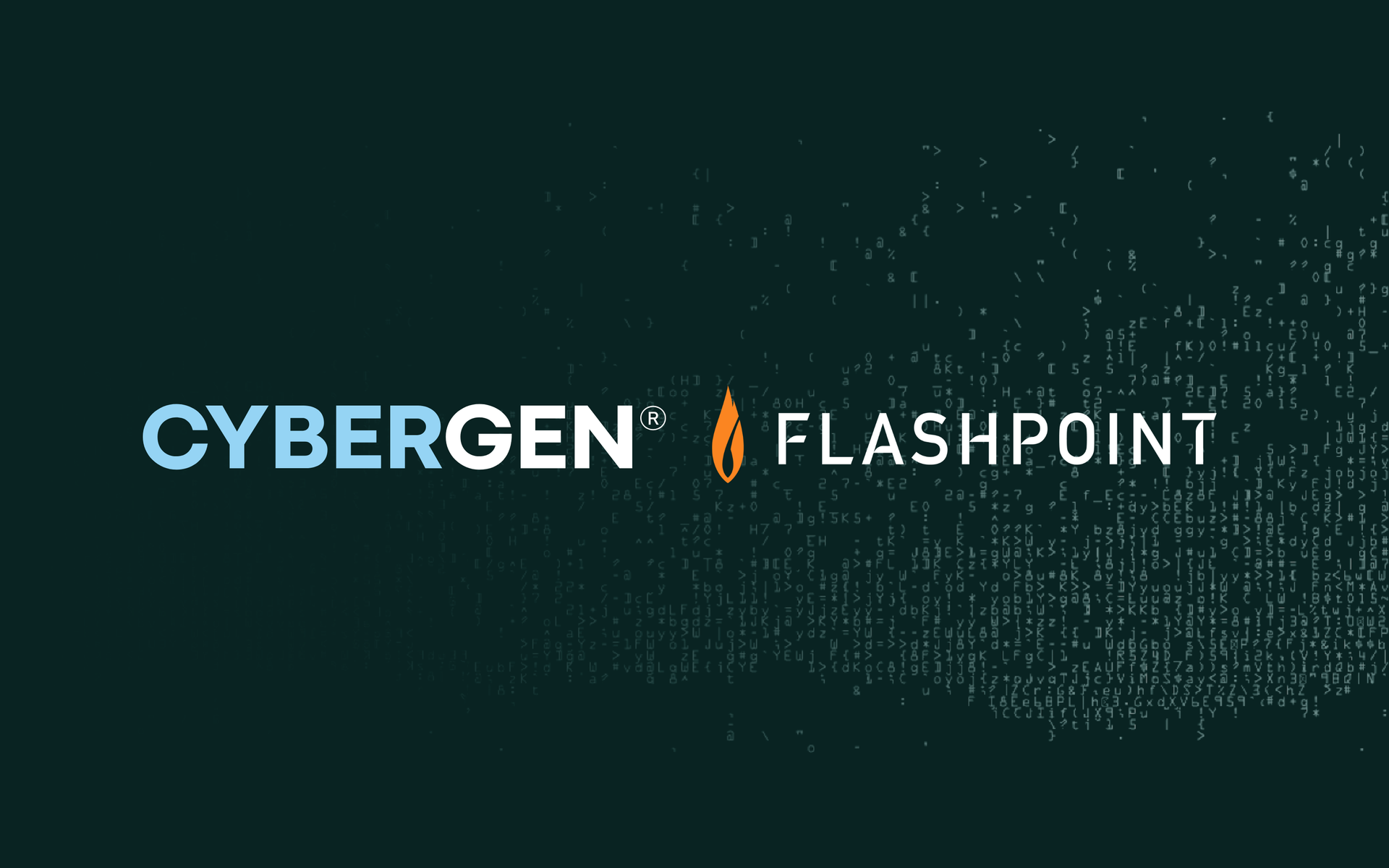What Is Data Loss Prevention? (2025 Edition)
Introduction
Having a DLP policy in your business is essential. In this blog, we explore what data loss prevention is and why it’s more important than ever for organisations to take it seriously.
We all know that data, especially corporate and customer data has become a prime commodity for cybercriminals. Without a proper Data Loss Prevention (DLP) strategy, sensitive data like intellectual property, payment card information, Social Security numbers, and health records is at constant risk of being lost, stolen, or misused by attackers.
In today's increasingly digital and remote-first world, where cyberattacks are becoming more frequent and complex, DLP has evolved from a “nice-to-have” to a non-negotiable for every organisation big or small.
What is Data Loss Prevention?
What is Data Loss Prevention?
Data Loss Prevention is a set of tools, policies, and best practices that help organisations prevent the loss, misuse, or unauthorised access of sensitive data. While DLP traditionally focused on external threats, in 2025, insider threats both malicious and accidental have become a major concern.
Not all data breaches are caused by hackers; many result from human error or a lack of cyber awareness. That’s why Cybergen believes a robust DLP policy includes employee training, strong data classification protocols, and practical enforcement procedures across your digital environment.
Types of Data:
- Data at Rest: Information stored on hard drives, servers, or the cloud.
- Data in Motion: Information transmitted across networks, like emails or file transfers.
- Data in Use: Active data being accessed or manipulated by employees on endpoints or systems.
Data at Rest
Data at rest refers to information that is stored in a stable location and is not actively moving through networks or being accessed by users. This includes files saved on servers, hard drives, databases, backup systems, or cloud storage services like SharePoint or OneDrive. While data at rest may appear static and safe, it is often the prime target for cybercriminals, especially during ransomware attacks or insider threats.
For example, an oil and gas company might store seismic survey data or pipeline schematics on a secured server. While this data isn’t being transmitted or edited in real time, if a threat actor gains access to the server through a compromised administrator account or a misconfigured firewall, they could encrypt or exfiltrate terabytes of sensitive data unnoticed.
The challenge with protecting data at rest is ensuring that even when not in motion, the data is encrypted, access is restricted, and visibility is maintained. Cybergen recommends implementing disk-level encryption, strict file permissions, and full audit trails. For businesses using Microsoft 365 or Azure, built-in solutions like Microsoft Purview Information Protection can apply classification labels and encryption to files based on sensitivity level, even while stored.
In regulated industries, securing data at rest is also a compliance requirement. Whether it's GDPR, HIPAA, or NIS2, regulations typically mandate that customer data, employee records, and financial information stored on systems be properly encrypted and access-controlled.
Data at rest is often overlooked simply because it’s not in active use. But in the event of a breach, it’s often this “quiet” data that gets exposed or locked down. Treating stored data as a live asset is a vital mindset shift in DLP strategy.
Data in Motion
Data in motion refers to information that is actively moving between locations, users, or devices. This includes emails, instant messages, API calls, file transfers, or any data transmitted over networks, both internally and externally. Because this data is actively travelling, it is most vulnerable to interception, man-in-the-middle attacks, or accidental misrouting.
Consider a legal firm sending confidential case files over email to an external consultant. If that email is unencrypted, it can be intercepted by attackers monitoring unsecured network traffic. Alternatively, an employee might accidentally attach the wrong file to an outbound message, resulting in a data leak to the wrong recipient.
In the modern workplace, where hybrid teams use cloud tools, collaboration platforms, and mobile devices, data in motion is constantly crossing networks, both trusted and untrusted. The rise of shadow IT (unauthorised apps and services) has further increased the risk, as employees may share files through non-compliant channels like personal Dropbox accounts or unsecured WhatsApp messages.
To protect data in motion, companies must implement transport-level encryption such as TLS, secure email gateways, and DLP policies that scan outbound content for sensitive information. Microsoft DLP, for instance, can automatically block or encrypt emails that contain personally identifiable information (PII), credit card numbers, or project code names.
It’s also critical to monitor file transfer protocols (FTPs), API endpoints, and remote user sessions. Many cyberattacks begin by intercepting unencrypted network data or exploiting misconfigured transmission settings. Regular auditing of data flows and enforcement of encryption policies ensures that even while data is in transit, it remains protected from interception and unauthorised access.
Data in Use
Data in use is information that is currently being accessed, modified, processed, or interacted with by applications, users, or systems. This is often the most volatile and difficult form of data to control, because it exists momentarily within memory, is rendered visible on screen, or is being actively edited in real-time.
For example, when an engineer opens a blueprint from a shared drive and begins editing it in AutoCAD, the data is in use. Similarly, a finance executive working in an Excel spreadsheet containing payroll figures, or a HR manager accessing a personnel database to update records, are all interacting with data in use.
Because data in use is dynamic, traditional encryption isn’t always enough. It must be protected without interfering with usability. Risks here include unauthorised screenshots, copy-pasting data into external apps, screen-sharing confidential documents on video calls, or uploading files to unauthorised cloud services. These actions may not leave a lasting log unless properly monitored.
Endpoint DLP tools are especially useful in managing data in use. Microsoft DLP with E5 licensing can detect when sensitive data is copied to the clipboard, printed, or transferred via USB. It can also alert or block users in real-time if they attempt to upload internal documents to non-approved platforms.
Another effective tactic is to apply real-time access controls that restrict editing or downloading of documents unless conditions are met, such as accessing from a corporate device on a secure connection.
Insider threats and accidental errors make data in use particularly risky. A staff member might edit sensitive files and then inadvertently save them in the wrong shared folder, exposing the information to the broader organisation. Monitoring how employees interact with data, not just where it lives or how it moves, completes the DLP lifecycle.
In 2025, organisations must treat all three data states at rest, in motion, and use with equal importance. Only by understanding the nuances of each can they apply effective, layered security policies that truly reduce the risk of data loss.
Start Now: How to Use Microsoft DLP to Protect Your Business Today
Many organisations already have powerful data protection tools at their fingertips, they just haven’t turned them on. Suppose your business uses Microsoft 365 with an enterprise licence such as Microsoft 365 E3 or E5. In that case, you already have access to Microsoft Purview Data Loss Prevention (DLP), one of the most accessible and integrated DLP platforms available today.
Microsoft DLP is designed to prevent the unauthorised sharing, leaking, or mishandling of sensitive information across Microsoft’s ecosystem. It works across Exchange emails, Teams chats, OneDrive, SharePoint, and even endpoints like laptops and mobile devices connected to Microsoft Defender for Endpoint. Its strength lies in its seamless integration, meaning your data protection is not an add-on but part of the platform you already use every day.
Companies can start by defining DLP policies within the Microsoft Purview Compliance Portal. These policies identify and automatically protect sensitive information types like financial records, national ID numbers, health data, or internal intellectual property. For example, you can set rules that prevent credit card data from being emailed outside the organisation or block users from copying sensitive documents to USB drives.
Using the Microsoft 365 E3 licence, businesses can apply basic DLP policies across email and file storage, giving foundational protection with relatively little setup. However, if your organisation holds a Microsoft 365 E5 licence, you unlock advanced features like endpoint DLP, exact data match, and auto-labelling, which provide deeper visibility and real-time response to high-risk activities, such as users attempting to upload sensitive files to unsanctioned cloud apps.
Implementing Microsoft DLP can begin right now. Start by identifying your most sensitive data types and where they live. Next, use Microsoft’s built-in policy templates to apply protection rules aligned with your compliance goals (e.g. GDPR, HIPAA, or UK-specific standards). Then monitor activity reports to understand where risks are emerging. The system provides clear dashboards and alerts, making it easy for security teams and compliance officers to act quickly when issues arise.
By enabling Microsoft DLP today, businesses can gain immediate control over how their data is accessed, shared, and moved, without the need for third-party software or complex integrations. It’s a fast, effective way to reduce risk, improve compliance, and increase visibility into daily operations. Most importantly, it turns the tools you already pay for into a working part of your security posture, something every business should capitalise on right now.
Why Do Companies Need DLP?
Data is the backbone of modern business. Whether it’s customer information, intellectual property, or operational blueprints, sensitive data fuels decision-making, competitive edge, and daily productivity. Yet, as organisations become more digital and interconnected, the risk of data loss has grown exponentially.
That’s where Data Loss Prevention (DLP) becomes not only beneficial but essential. Every business, regardless of size, sector, or digital maturity, needs to consider how it protects its data assets. From tech startups and legal firms to oil and gas companies, manufacturers, and financial institutions, the common denominator is data. And wherever valuable data exists, so does risk.
The Small Business Misconception
Small and mid-sized businesses (SMBs) often assume they are too small to attract cybercriminals. This is a dangerous misconception. In fact, attackers often target SMBs precisely because they are less likely to have strong cybersecurity controls in place. They may not have in-house IT teams, dedicated CISOs, or enterprise-level budgets, but they still store sensitive client data, employee records, financial information, and intellectual property. Cybercriminals know this. In 2025, many attacks are automated using AI-driven scripts that scan for vulnerabilities across the internet, indiscriminately targeting any exposed endpoint or misconfigured cloud drive. If your data is unprotected, you’re a target — full stop.
Legal and Regulatory Pressures
DLP is no longer just a smart cybersecurity strategy, it is now a legal and regulatory requirement in many industries. The landscape in 2025 includes stringent compliance obligations such as GDPR (General Data Protection Regulation) in the UK and EU, HIPAA (Health Insurance Portability and Accountability Act) for healthcare in the US, NIS2 Directive across critical infrastructure, energy, and industrial sectors, ISO/IEC 27001/27019 for information and operational data security, and SOC 2 for service providers and SaaS platforms.
Failure to comply with these regulations can result in hefty fines, legal action, and sanctions, along with the reputational fallout that often follows public data breaches. Regulators are increasingly focused not only on how a breach occurred but whether an organisation did enough to prevent it. Implementing DLP tools and policies shows diligence and can support your defence in the event of an incident.
Real-World Impact
At Cybergen, we’ve seen DLP solutions in action, stopping ransomware payloads from exfiltrating client files, blocking unauthorised uploads to cloud drives, and detecting insider threats before data could be leaked or stolen. These aren’t hypothetical use cases. These are real-world success stories, proving that DLP is a frontline defence in a world of evolving threats.
Common Causes of Data Loss
Understanding why data is lost helps companies design smarter defences. The root causes typically fall into two main categories:
External Threats
The most talked-about risks are those posed by external attackers. These include: Phishing emails that trick users into handing over login credentials, malware and ransomware that encrypt or steal files, social engineering where attackers impersonate legitimate users, and unsecured endpoints and cloud services with weak or default configurations. What makes these attacks more dangerous in 2025 is the rise of AI-assisted threat actors.
Today’s hackers use automation to scale their operations, making it easier to launch thousands of phishing attempts, scan for open databases, or manipulate user behaviour through deepfake communication. DLP tools monitor and control data movement at every stage, making it harder for attackers to extract or misuse sensitive files.
Internal Threats
Internal risks are just as critical and often more difficult to detect. Employees, whether through carelessness or malice, can be responsible for major breaches. Common internal threats include: sending confidential files to the wrong recipient, uploading sensitive documents to personal cloud storage, using unauthorised USB devices or file-sharing platforms, mishandling data due to lack of training or awareness, and malicious actions by disgruntled employees or contractors.
Former staff who still have access credentials or vendors with overly broad permissions can also pose serious risks. In these cases, DLP tools can automatically restrict access, block suspicious file transfers, and alert security teams to potential insider misuse.
With mobile workforces, growing regulatory demands, and intelligent threat actors, data loss prevention is a cornerstone of operational resilience. With the right DLP strategy, businesses can mitigate risk, meet compliance, protect customers, and maintain trust. And with partners like Cybergen, implementing robust, scalable, and intelligent data protection is more accessible than ever.
Cloud DLP: Protecting Data in a Remote-First World
As hybrid and remote work environments continue into 2025, the cloud has become the default storage and collaboration platform for most businesses, including those in regulated or high-risk industries like energy, finance, and defence. But while cloud adoption boosts productivity and flexibility, it also expands the attack surface. Data is now stored, accessed, and transferred across more endpoints and user identities than ever before.
Cloud DLP (Data Loss Prevention) plays a critical role in safeguarding sensitive information across platforms such as Microsoft 365, Google Workspace, Dropbox, and industry-specific SaaS tools. It prevents unauthorised sharing, misconfigured permissions, and accidental exposure.
Cybergen recommends the following best practices:
- Map and classify all cloud-based data: You can’t protect what you can’t see. Begin by auditing cloud storage locations and classifying data by sensitivity. This helps enforce DLP rules with precision, particularly for contracts, technical drawings, IP, or compliance documents.
- Use encryption and multi-factor authentication (MFA): Cloud DLP must include encryption both at rest and in transit. Combined with MFA, this prevents unauthorised access, even if user credentials are compromised.
- Limit access based on business need: Role-based access control is vital. Ensure only specific users or departments can access particular folders or files, and enforce expiry dates or view-only modes when sharing externally.
Cloud DLP should integrate with identity and access management (IAM) tools and provide real-time alerting when policy violations occur. In 2025, protecting your data in the cloud isn’t just about security, it’s about business continuity and compliance.
Enterprise DLP: Full-Spectrum Protection Across Large Organisations
Enterprise DLP is essential for larger organisations with multiple departments, locations, and data flows. These environments often struggle with fragmented tools and inconsistent policies. Without enterprise-wide visibility, gaps form, and attackers exploit them.
Enterprise DLP aims to create a unified approach to data protection across every endpoint, application, and user.
Cybergen recommends:
- Standardising DLP policies across all divisions: Different departments may handle data differently, but protection should be consistent. A unified DLP strategy ensures that all data, whether HR records, R&D output, or financial data, is subject to the same security oversight.
- Enforcing role-based access controls: Large organisations must ensure that access to sensitive data is based on job function, not seniority or convenience. This principle of least privilege limits insider threat risk and makes policy enforcement more effective.
- Using central dashboards for visibility: Enterprise DLP should feature a single control plane. This enables security teams to monitor threats in real time, identify patterns of unusual behaviour, and respond quickly to potential data exfiltration or insider leaks.
For enterprises, DLP is not a one-size-fits-all product, it’s a framework. A strong enterprise DLP solution works seamlessly with SIEM platforms, endpoint protection, and mobile device management to secure data wherever it lives or moves.
Network DLP: Securing Communication Channels and Traffic
While cloud and endpoint protection are critical, data still flows through traditional network paths — including FTP servers, email systems, instant messaging platforms, and VoIP. Network DLP focuses on protecting data as it travels across these channels.
Even in 2025, human error remains a key risk vector. Sensitive files might be accidentally emailed to external recipients, or confidential specs might be shared via unsecured chat apps. Network DLP ensures such errors are caught and blocked in real time.
Cybergen’s key recommendations:
- Secure all endpoints with advanced encryption: Encryption protocols (TLS, S/MIME, etc.) ensure that data-in-transit remains unreadable if intercepted. This protects both internal and external communications, particularly when connecting remote teams or third-party vendors.
- Limit data transmission rules across the network: Define what types of files or data can be sent via email, FTP, or other channels. Use policies to block outbound transmissions that include sensitive keywords, document types, or patterns (like credit card numbers or project codes).
- Monitor traffic with AI-assisted analysis: Machine learning allows your DLP system to understand normal behaviour and flag anomalies. For example, a sudden spike in outbound traffic from a workstation could signal a data breach. AI enables faster detection and smarter response.
Network DLP acts as a gatekeeper, controlling how data leaves your perimeter, whether by accident or by design.
How to Prevent Data Loss in 2025
Data breaches and accidental leaks are increasing in frequency, cost, and complexity. In oil and gas, the implications of data loss go beyond financial penalties; they affect safety, operational secrecy, and competitive advantage. Below are key strategies every organisation should implement in 2025 to protect critical data across both IT and field operations.
1. Install Dedicated Data Loss Prevention (DLP) Software
A strong data loss prevention strategy begins with having the right tools in place. DLP software acts as your first digital line of defence, monitoring how sensitive data moves across your systems and preventing it from being transferred, copied, or shared without authorisation.
In 2025, DLP solutions should be integrated into a broader security stack that includes antivirus, intrusion detection, endpoint monitoring, and secure file transfer protocols. Choose a DLP platform that supports granular policy creation, offers visibility across cloud and endpoint devices, and provides real-time alerts. Ensure it aligns with your compliance obligations and is tailored to your operational environment, including remote rigs, central offices, and field technician devices.
2. Control Access and Organise Data Intelligently
Unstructured access is one of the most overlooked causes of data leaks. Not every employee needs access to every file. In 2025, implementing strict access controls should be the standard, not the exception.
Begin by classifying your data: label documents by sensitivity level (e.g. confidential, internal use, public). Then, apply role-based access controls (RBAC) to ensure only authorised individuals can access critical information. Field data, engineering diagrams, operational manuals, and regulatory documents must all be protected with layered restrictions.
When an employee changes roles, access should be reviewed and adjusted. When a contractor leaves, credentials should be revoked immediately. These small steps dramatically reduce insider risk and unintentional exposure.
3. Enforce Strong Password and MFA Protocols
Strong authentication remains one of the most effective ways to stop data loss before it starts. In 2025, every user in your network, from HR to field engineers, should be required to use long, complex passwords, stored securely using password managers.
But passwords alone are not enough. Enabling multi-factor authentication (MFA) adds a critical layer of defence. Combine MFA with IP-based restrictions and time-limited session access for high-sensitivity systems. For example, ensure that remote access to project documents or operational dashboards is only possible during working hours, from approved devices and locations.
The right password policy makes it significantly harder for attackers to move laterally through your systems, even if they compromise a single account.
4. Ongoing Cybersecurity Training
Human error continues to be the leading cause of data breaches. Whether it’s clicking on a phishing email or sending a sensitive file to the wrong recipient, well-meaning staff can accidentally become security liabilities. That’s why regular cybersecurity training is non-negotiable.
Cybergen delivers tailored training programmes that teach employees to recognise social engineering, handle data responsibly, and understand the legal and operational implications of a breach. In 2025, training must go beyond tick-box compliance. It should be practical, scenario-based, and interactive.
Simulated phishing attacks, real-world case studies, and response drills will help reinforce awareness and turn employees into an active part of your data loss prevention strategy.
5. Audit and Update Regularly
Cybersecurity is not a one-time project it is a continuous cycle. The DLP policies and tools you implemented in 2023 may not protect you in 2025. Threats evolve rapidly, and so must your defences.
Perform regular audits of your systems and access logs. Look for unusual download patterns, suspicious file movements, or bypassed security rules. Update your DLP configurations in line with new risks, business changes, or regulatory updates.
Penetration testing plays a vital role here. Cybergen’s security experts can simulate insider threats, accidental data leaks, and targeted attacks to uncover vulnerabilities in your controls. Combined with periodic DLP rule reviews, this ensures your security posture stays ahead of emerging risks.
Summary
At Cybergen, we partner with industry-leading vendors and bring three decades of experience to help organisations secure their sensitive data. From cloud-native startups to legacy enterprise systems, our solutions are scalable, flexible, and always aligned with the latest threat landscape.
Want to learn more about protecting your organisation from data loss? Get in touch with us today.
Our clients trust us because we’re experienced, responsive, and forward-thinking, and we never get tired of earning that trust.
Ready to strengthen your security posture? Contact us today for more information on protecting your business.
Let's get protecting your business
Thank you for contacting us.
We will get back to you as soon as possible.
By submitting this form, you acknowledge that the information you provide will be processed in accordance with our Privacy Policy.
Please try again later.








